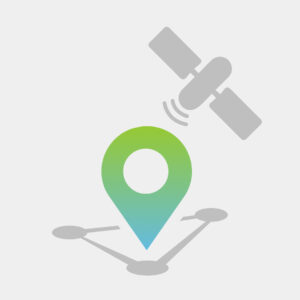Smart companies are building Learning and Development (L&D) programs that reskill or upskill their existing workforce with the hard and soft skills of the future. The skills these programs teach often reflect the skill gaps in the market and, as a result, tend to be deeply technical: blockchain, AI, cybersecurity, machine learning, big data, and others.
Given the cutting-edge, high-tech nature of these skills, it only makes sense to present your content in a modern way too. Most L&D programs still lean too heavily on outdated distribution methods that require everyone, for example, to travel to a classroom and listen to an instructor for days on end or read through a powerpoint or PDF document on their own. Not only is this outdated way of delivering content inconsistent with the modern topic you’re teaching, but your employees will find it unengaging and likely won’t learn much at all.
The key lesson here is that modern L&D programs require modern distribution methods and advanced technology. How can you upgrade the distribution methods of your L&D programs so they’re accessible anytime from everywhere and incorporate modern teaching methods? In this blog post, we will give three examples of advanced and engaging technologies that will make your L&D programs feel as modern as their subject matter.
Geofencing
A geofence is a virtual perimeter around a real-world geographic area. The perimeters can be identified through GPS, Wi-Fi, RFID, or IP, and can be dynamically generated or predefined with a set of physical boundaries. For example, parents can use a geofence so they’re notified when their child enters or leaves a particular area, or security personnel can use a geofence to understand if there’s an intruder in the area they’re trying to protect.
L&D programs can use geofences to target employees in a particular area and deliver content to their devices when they’re in that area. It allows you to create a proximity-based learning environment where your employees are given the content they need when and where they need it.
For example, a junior mechanic could walk into a geofenced area of highly technical equipment and immediately gain access to a remote expert who can walk them through the right steps to interact with a particular machine. Alternatively, the geofence could give them access to a checklist, a video, or a PDF.
A geofence works best for frontline, deskless employees and an L&D program that delivers bite-sized content. You can’t expect the mechanic of the above example to thumb through a 500-page virtual manual when they’re standing in front of a purring machine. You need to deliver short, actionable content that reinforces the lessons you taught them previously.
 Virtual and Augmented Reality
Virtual and Augmented Reality
After many years of disappointing results, virtual reality has finally left the hype stage. VR devices have come down significantly in cost, no longer cause nausea or disorientation, and can deliver an immersive experience that you can’t replicate with any other medium. As a result, companies are increasingly incorporating VR into their L&D programs.
For example, Walmart uses Oculus Go headsets to present employees with the everyday happenings and problems in a virtual Walmart store, such as spills, misplaced items, an angry customer, and more. They even use an employee’s virtual behavior to understand their potential for promotion.
Augmented reality has a place here too, particularly in combination with geofencing. Using a device such as Microsoft’s HoloLens 2, employees can overlay information when and where they need it.
Gamification
When learning is fun, employees are much more likely to engage with your L&D program. Gamification integrates game-based mechanics so you associate learning with the fun of playing games. Gamifying certain aspects of L&D can make your content much more enjoyable, as well as accelerate an employee’s transition through the program. This doesn’t need to be complex either; it could be a simple leaderboard or badges you award whenever someone completes a part of the program.
Successful gamification is designed around the employee’s success and offers real time feedback. Plus – like in most games be it board games, digital games, or athletic sports – gamification encourages cooperation as well as competition to help motivate employees to complete a course. However, be wary of building in gamification just to get employees to rapidly reach a set goal as that may hurt your efforts more than it does good. As an organization, you need to find the sweet spot between your goals and an employee’s success with the gamification you choose to implement.
So don’t gamify to rush employees through your L&D programs as fast as possible. Instead, gamify to give employees feedback on their learning attempts, to provide context around their learning (e.g. through a story), and to give them the opportunity to fail and understand what went wrong.
In Conclusion
Geofencing, VR/AR, and gamification aren’t absolute necessities for every L&D program. They are meant as examples to get you thinking about how you can revamp your L&D program so its delivery methods feel as modern as the skills you’re teaching. If you want to modernize your L&D programs but don’t know where to begin, Skill-Up Technologies can help. We work with brands such as Microsoft, Oracle, IBM, and Lenovo to deliver digital-ready learning solutions that scale globally and are delivered in a modern, engaging way.
A company that can continuously and successfully evolve its workforce to meet the ever-changing requirements of its customers has a significant edge over a company that just hires and fires. Modernize your L&D solution today and stay ahead of the curve.


